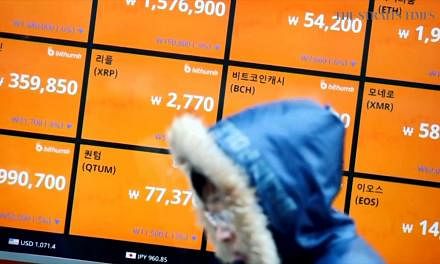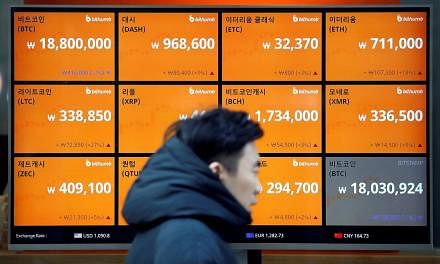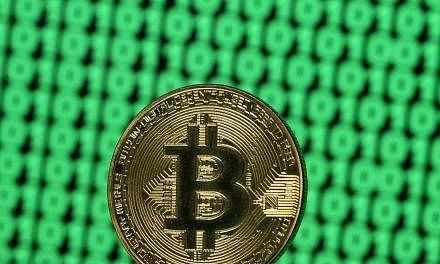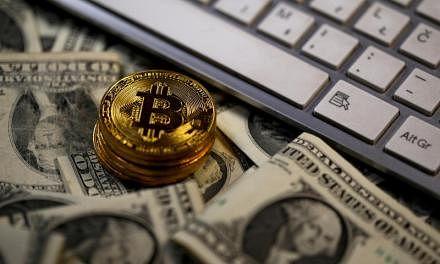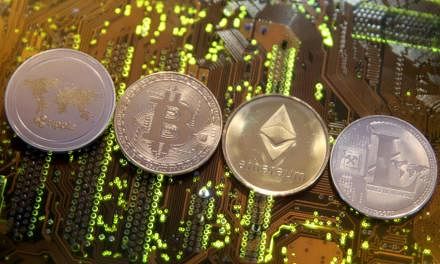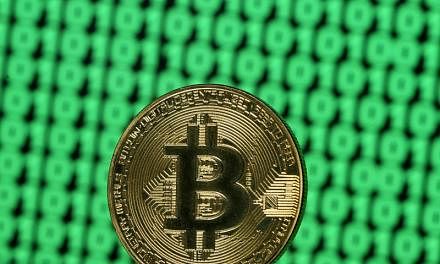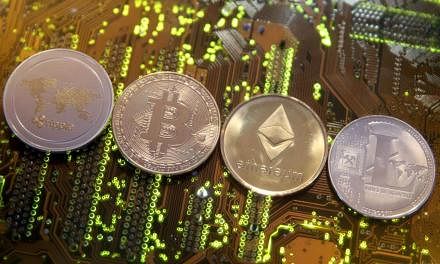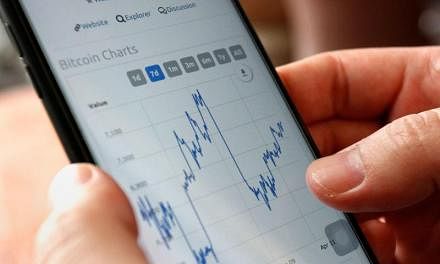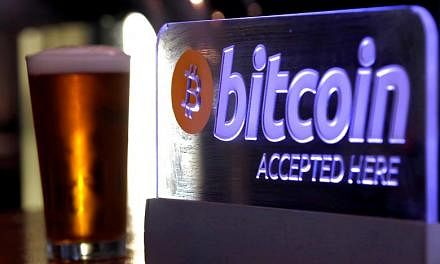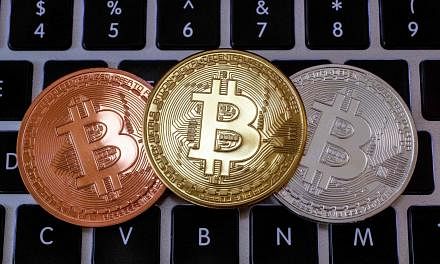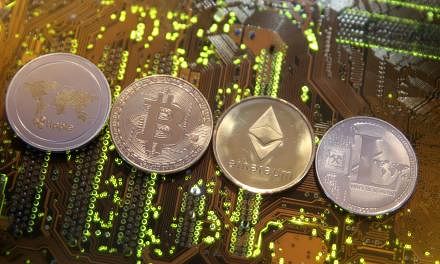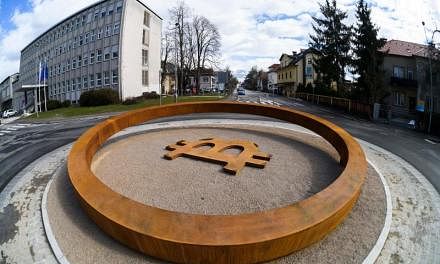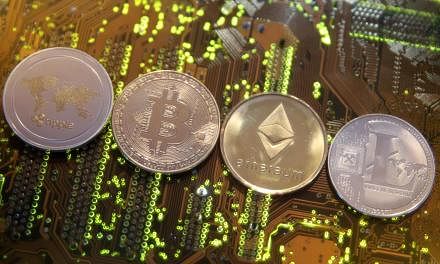SINGAPORE - The popularity of cryptocurrency has seen a resurgence in recent weeks, as its poster boy, bitcoin, surged in price to cross over US$16,000 (S$21,550 ) per bitcoin on Thursday (Dec 14).
This has fuelled interest not only in investors looking to ride the cryptocurrency wave, but also those who want to earn bitcoin simply by letting their computers run 24/7.
The bitcoin system is set up such that more bitcoins can be unlocked and released into the world - a process known as mining.
You can earn bitcoin by using a computer to perform calculations - the more calculations it does and the faster it does so, the higher your chances of earning bitcoins.
Here's more about mining:
1 What is bitcoin mining?
Cryptocurrencies such as bitcoin exists as a series of decentralised transactions. It runs on what is known as a blockchain, which acts like a ledger, or record system, of all the transactions made via bitcoin.
When users transfer bitcoin to one another, the transaction is verified not by one central system, but by all the computers within the system.
The only way bitcoin is exchanged and traded is through a series of exchanges which are independently verified by other computers in the blockchain.
To reward users for helping to verify these transactions, the bitcoin system gives out bitcoin to users who participate in this verification process and who can solve a difficult computational problem.
2 How is bitcoin mined?
Information that is constantly being added to this ledger comes in the form of a new "block", which is an update of the history of bitcoin transactions made thus far.
A new block is made every 10 minutes. Each time a new block is added, the user whose computer guessed it receives a cashout of bitcoin.
Today, earning a block will net miners 12.5 bitcoin. At current rates, this works out to $291,812.50, although the volatility of bitcoin means its monetary value can fluctuate drastically.
This reward for mining bitcoin halves every 210,000 blocks, or about every four years. The value will halve in 2020 so that earning a block gives miners 6.25 bitcoin, and again in 2024, until the total number of bitcoin is capped at 21 million.
This means about 1,800 new bitcoin are currently created per day.
But as mentioned, creating a new block is not as simple as verifying transactions. Miners must also solve a complicated maths problem, known as a hash.
In simplest terms, users get their computers to guess a number. And this is no small number - it's a 64-digit hexadecimal number, which could look something like this:
" 0000000000000000e067a478024addfecdc93628978aa52d91fabd4292982a50"
The more guesses or calculations a computer makes per second, the higher the chances of it guessing the correct number, letting the miner earn that bitcoin.
3 What do miners use to mine bitcoin?
It could take trillions of attempts before a computer can guess the given hash for a block.
Mining uses a computer's central processing unit (CPU) or graphics processing unit (GPU), units which provide the computing power to run computer programs such as software or games.
But since running software essentially boils down to making calculations, bitcoin miners use the CPU and GPU to perform the calculations needed to guess the bitcoin hash.
GPUs are the default tool of choice because they can perform more calculations. Early bitcoin miners realised they could maximise their computer's mining efficiency by stacking multiple GPUs together into what is called a mining rig.
In recent years, however, even more specialised and dedicated mining equipment has become popular. The latest uses application-specific integrated circuits (ASIC), which are computer chips programmed to do one thing and one thing only.
ASIC devices are built for speed and capacity - the better to mine bitcons. The AntMiner S9, for example, goes for US$2,490 and can perform 13.5 trillion calculations per second, far outpacing a GPU rig which can perform only millions of calculations per second.
You can start mining bitcoin with your current computer, or pump a few hundred dollars into a GPU mining rig. But it will not be worth it because the low computational rates will not earn you much.
However, the lure of profits to be made from mining bitcoin has led hackers to think of innovative ways to outsource the computational requirements of doing so to ordinary users.
The Straits Times reported on Thursday (Dec14) that hackers have found ways to tap the processing power of hundreds of thousands of regular computers to mine bitcoin without users knowing it.
4 Should you start mining for bitcoin?
Anyone can start mining, but it's a different story if you consider whether the returns are worth it or not.
There is first the upfront cost of getting a mining rig or ASIC, which can run to thousands of dollars.
More importantly, mining requires equipment which runs 24/7, which requires a constant supply of electricity and power.
Bitcoin miners now agree it is not worth mining bitcoin as a hobby or using a single computer, as the electricity bill would equal or even exceed the profits made.
There are now giant farms dedicated to mining bitcoin, mostly in China, where electricity is cheap. Mining farms have also sprung up in deserts in the United States, which try to use solar energy to keep electricity bills down.


